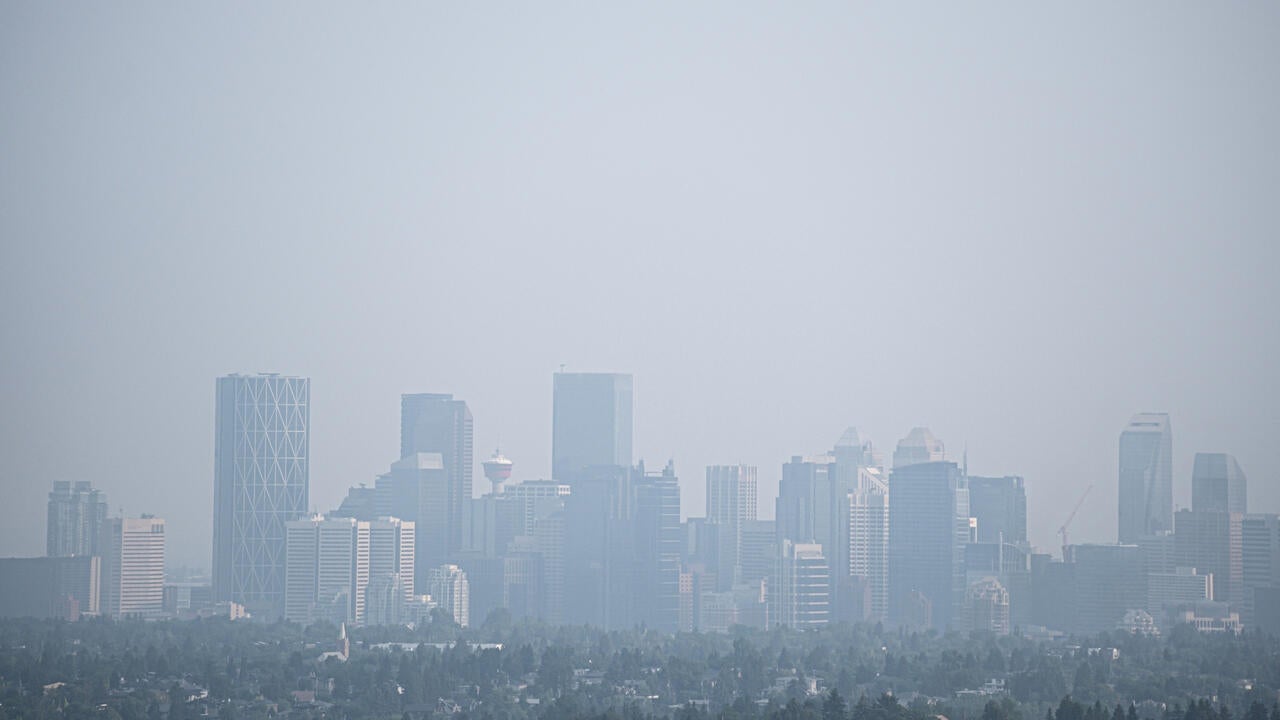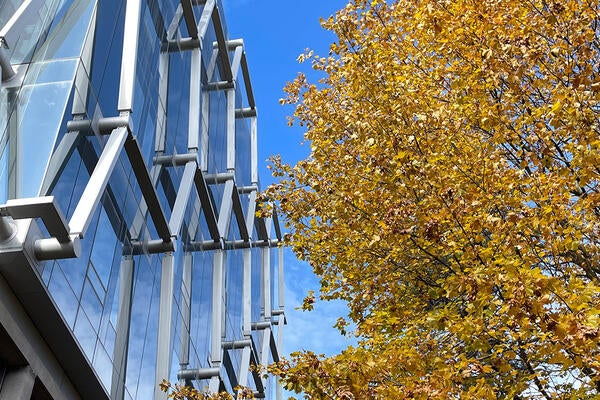
Q and A with the experts: The long-term effect of wildfires in Canada
University of Waterloo professor Rebecca Saari examines what causes so many wildfires in Canada and the long-term effect on society.

University of Waterloo professor Rebecca Saari examines what causes so many wildfires in Canada and the long-term effect on society.
By Media RelationsThe most harmful air pollutant worldwide is fine particular matter. In Canada, the biggest natural source of this pollutant is wildfires. Winds can spread wildfire smoke over a wide area, affecting areas hundreds of kilometres downwind. Professor Rebecca Saari, who studies the consequences of climate change and climate policy on human health and environmental inequality, examines what causes these wildfires and the long-term effect on society.
How do wildfires affect air quality and our health?
Significant wildfire activity can result in poor air quality with high levels of pollutant concentrations resulting from wildfire smoke. We have seen dangerous levels of air pollution near the fires across British Columbia, Alberta, Manitoba, and Northern Ontario, but also, for example, in downtown Toronto due to winds spreading the smoke.
Wildfire releases smoke and gases that include a harmful mixture of pollutants. Individually, many of these pollutants are known to affect our health. We might experience irritation in our throat, coughing, headaches, or other respiratory symptoms when exposed. People with underlying health risks, especially respiratory and cardiovascular illness, are at higher risk for more serious outcomes, like asthma attacks, that may require hospitalization.
What long-term effect may wildfires cause on air quality?
The effects of wildfires on air quality are most severe while fires are actively burning. Thus, the worst effects are short-term. The chemistry and dynamics of the atmosphere mean that some effects can last for weeks and others for years, but these processes are complex. Over the long term, more frequent wildfires could continue to lead to more frequent days with poor air quality in affected areas.
Is climate change or something else to be blamed for the numerous wildfires?
Specific wildfires can have particular causes. Climate change is a change in the average weather. It plays a role in creating the weather conditions that make fires more likely to start, persist, and spread. The recent Sixth Assessment Report by Working Group I of the Intergovernmental Panel on Climate Change notes the role of climate change in making wildfires more likely to occur over the last century and predicts future increases over parts of North America. Other reports, including Canadian academic studies, have suggested that conditions leading to unmanageable fires can more than double in parts of the country due to climate change this century.
What needs to be done to lessen wildfires?
Preventing wildfires and their effects is a complex challenge. Focusing on the atmospheric-related factors, we have increasing evidence that reducing the emissions causing climate change can help prevent some of the conditions that make wildfires more likely to occur and spread uncontrollably. We can also take multiple concrete steps to prevent some of the health-related effects of poor air quality on our health. For example, we can reduce other sources of air pollution to avoid some of the worst air quality and chronic exposure to poor air. We can continue to invest in systems that provide warnings and advice to lower exposures to wildfire smoke. Lastly, we can work to protect public health through prevention, targeting underlying health risks that make people vulnerable to poor air, and building public health systems resilient to future risks from wildfires.

Read more
Engineering researchers team up to tackle the plastics pollution problem with microbial innovation and engineering design

Read more
15 University of Waterloo researchers have been named to the annual Highly Cited Researchers™ list for significant contributions to their specific fields of research

University of Waterloo Engineering master's student Liam Salass developed an AI-based system that improved puck detection when analyzing game video. (University of Waterloo)
Read more
University of Waterloo researchers make big strides in hockey analysis using game video
The University of Waterloo acknowledges that much of our work takes place on the traditional territory of the Neutral, Anishinaabeg, and Haudenosaunee peoples. Our main campus is situated on the Haldimand Tract, the land granted to the Six Nations that includes six miles on each side of the Grand River. Our active work toward reconciliation takes place across our campuses through research, learning, teaching, and community building, and is co-ordinated within the Office of Indigenous Relations.